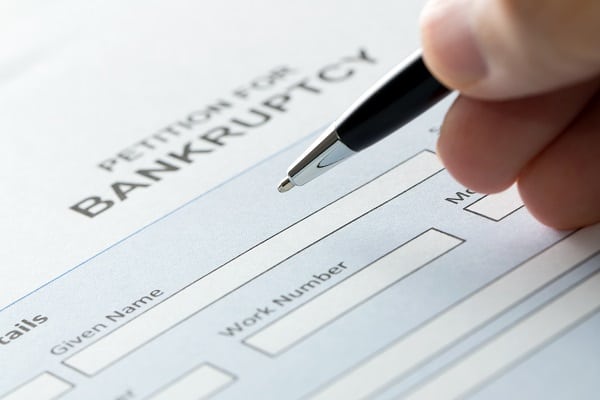
Filing a Car Accident Diminished Value Claim in Texas: Your Complete Guide from Machi & Associates, P.C.
If you’ve been in a car accident in Texas, you probably know to seek repairs, deal with the insurance companies, and get your vehicle back on the road. But do you know about your right to file a diminished value claim? Even perfectly repaired vehicles can lose significant resale or trade-in value simply because they’ve been involved in a crash. Getting full compensation for your loss requires knowledge, evidence, and—often—the advocacy of an experienced attorney, such as the team at Machi & Associates, P.C. in Arlington, TX.
What Is a Diminished Value Claim?
A diminished value claim is a demand for compensation that covers the loss in your car's market value after it’s been damaged in a collision and subsequently repaired.
Why does this matter? Prospective buyers and dealerships almost always discount vehicles with an accident history—regardless of the quality of repairs. Even with the best bodywork, your car’s value may be noticeably lower than a comparable car with no prior accidents[2][3][5].
- For example: Your car was worth $20,000 before the crash. After repairs, it might sell for only $15,000. The diminished value is $5,000—and you have a right to claim this against the at-fault driver’s insurance.
- Texas law recognizes this right if another driver was at fault and their coverage is valid[2][3][4].
Types of Diminished Value Claims in Texas
- Inherent Diminished Value: Even after top-quality repairs, the vehicle’s accident history results in reduced resale/trade-in value. This is the most common type claimed.
- Repair-Related Diminished Value: The loss in value due to the inability to restore the car to its original standard. This can stem from non-OEM parts, mismatched paint, or subpar repair work.
- Immediate Diminished Value: The difference between the car’s value immediately before and after the accident but before repairs are done.
Understanding the nature of your claim will maximize your case. The experienced team at Machi & Associates, P.C. can help you select the right category and avoid common insurance pitfalls[2][3][5].
Can You File a Diminished Value Claim?
Yes, you can—if:
- The accident was not your fault
- The at-fault driver had insurance at the time of the crash
- Your car lost measurable market value after repairs (not declared a total loss)
The at-fault driver’s insurer is required by law to compensate you for your full loss—including diminished value. Texas is a “diminished value” state, so this right is enforceable under state law[2][3][4].
Common Scenarios Where Diminished Value Claims Apply
- High-value or luxury vehicles with pristine histories
- Newer cars, which lose more market value from an accident record
- Commercial vehicles needing to maintain high asset values
- Any car owner seeking to sell or trade-in their car post-repair
How to Calculate Diminished Value
Insurance companies rarely offer fair diminished value claim settlements unless you present strong documentation. Here are the basic steps:
- Assess your car’s pre-accident value: Use sources such as Kelley Blue Book (KBB), NADA Guides, or dealer appraisals. Retain paperwork and screenshots.
- Obtain professional post-repair valuation: Engage an independent appraiser or use dealer buy-back offers to show the car’s reduced resale value.
- Calculate the loss: The “diminished value” is the difference between pre-accident and post-repair appraisals. For example, if your car’s pre-accident value was $22,000 and its value after repair is $17,800, your claim should be for $4,200.
- Gather supporting documentation:
- Accident and repair reports
- Receipts and invoices from repairs
- History report (Carfax or AutoCheck)
- Appraisal(s), photos, and dealer trade-in estimates
Insurance companies also use formulas, such as taking 10% of the pre-accident value (capped value), then adjusting based on accident severity (damage multiplier), mileage multiplier, and other factors[5][7][11].
Steps to File a Diminished Value Claim in Texas
1. Prove the At-Fault Party’s Liability
You must establish that the other driver caused the accident. Get a copy of the police report and all insurance details.
2. Document the Full Extent of Your Loss
Professional appraisals and thorough documentation will strengthen your case. The more evidence you provide, the stronger your negotiating position.
3. Notify the At-Fault Party’s Insurance Company
Formally submit your claim along with all supporting evidence. Be specific: request diminished value as a separate item from repairs and other injuries.
4. Negotiate with the Insurance Adjuster
Insurers typically offer less than the true diminished value, if they don’t resist or deny the claim outright. Remain firm and back up your numbers.
5. Consult Machi & Associates, P.C. for Aggressive Representation
If the insurer delays, denies, or underpays, contact Machi & Associates, P.C. Our team in Arlington, TX has years of experience defeating insurance delay tactics and securing the maximum recovery for our clients. We can negotiate, file suit, and present expert appraisals on your behalf.
How Long Do I Have to File a Diminished Value Claim in Texas?
State law gives you two years from the date of the accident to file a diminished value claim[7]. Waiting can weaken or bar your case, so act promptly!
Why Insurance Companies Undervalue Diminished Value Claims
- They may dispute the extent or method of your appraisal
- They may downplay the loss or use lower multipliers
- They hope you lack documentation or legal representation
- They may propose a “quick settlement” at a far lower rate
With Machi & Associates, P.C. on your side, you benefit from rigorous negotiations and, if necessary, legal escalation to court. Our attorneys know how to gather the right evidence, present a compelling argument, and demonstrate the real-world DEVALUATION of your car.
Frequently Asked Questions: Diminished Value Claims in Texas
What if the car was a total loss?If your car was totaled, you generally receive the actual cash value of the car rather than a diminished value claim. Diminished value applies only when the car is repaired and not declared a total loss. What kinds of vehicles are best candidates for diminished value claims?
Newer, higher-value, luxury, or specialty vehicles stand to lose the most due to accident history and are often the best candidates. But nearly any vehicle with substantial market value can demonstrate diminished value. Can I file a diminished value claim if I was at fault?
You cannot file a third-party claim if you caused the accident, but some collision or “first-party” insurance policies may allow claims—although most insurers exclude this. Review your policy or consult Machi & Associates, P.C. for specifics. How is diminished value paid out?
Once approved, the insurance company issues payment for your diminished value as a separate check from your main repair settlement. How can a lawyer help with a diminished value claim?
Machi & Associates, P.C. will ensure you meet all state requirements, rigorously document your claim, and negotiate or litigate aggressively for the best possible outcome. Our team removes the uncertainty and frustration of claims handling, letting you focus on getting your life back to normal.
Why Choose Machi & Associates, P.C. for Your Diminished Value Claim in Texas?
- Decades of experience in Texas accident and insurance law
- Proven track record of maximizing diminished value settlements
- Personalized, honest advice—never a one-size-fits-all approach
- Access to trusted appraisers and expert witnesses
- No fee unless we win your diminished value case
If your car’s value was reduced after an accident that wasn’t your fault, don’t leave money on the table. Contact Machi & Associates, P.C. in Arlington, TX for a free and confidential case evaluation. We’ll review every detail, assess your loss, and fight for the compensation you truly deserve—so you, not the insurance company, come out ahead.
Contact our team today for a free consultation on your diminished value claim in Texas.






